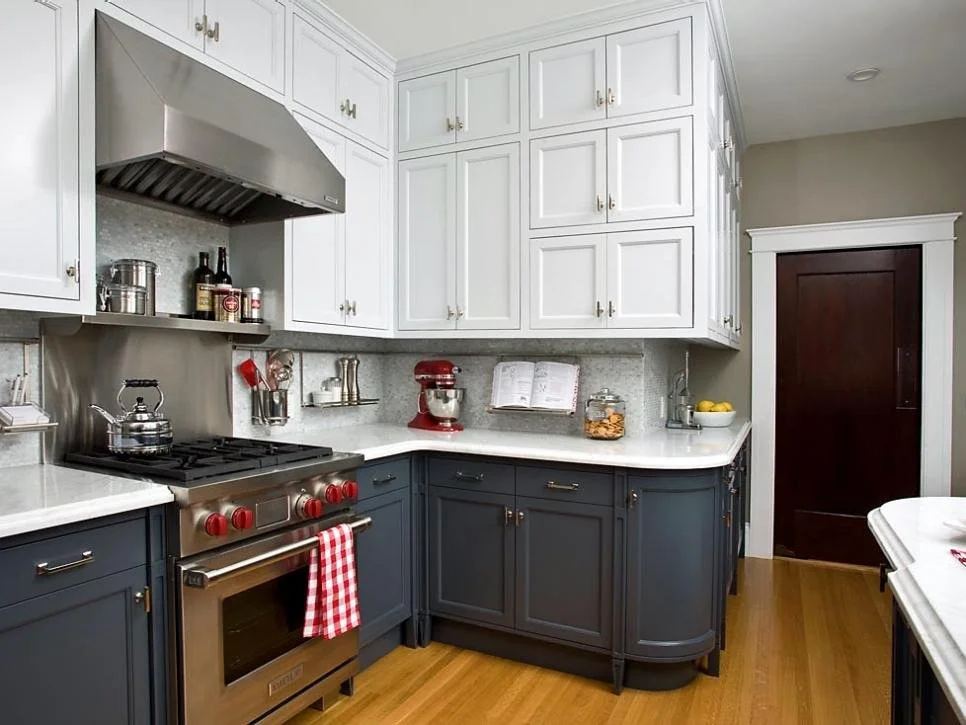Can You Mix and Match Kitchen Cabinets? Clear Your Doubts
Mixing kitchen cabinets? Bold choice. Done right, though, it’s all style.
You’re no longer limited to one look. Combining colors, textures, and finishes lets you bring personal taste right into your space.
The challenge? Making sure nothing clashes.
Balance is the secret. Contrast here, harmony there, and your kitchen gains style without looking chaotic.
This guide covers when mixing works, when it doesn’t, and how to get it right. Let’s get started.
Can You Mix and Match Kitchen Cabinets?
Yes, you can mix and match kitchen cabinets. Stick to 2–3 colors or styles, balance the design, and connect them with matching hardware for a stylish, cohesive look.
Key Takeaways
Mixing kitchen cabinets adds depth and personal style.
Balance is key, so avoid clashing colors or styles.
Stick to 2–3 complementary colors or finishes.
Use matching hardware and lighting to tie the look together.
When done right, mixed cabinets can enhance resale value and uniqueness.
What Does Mixing and Matching Kitchen Cabinets Mean?
Mixing and matching isn’t about randomly combining styles—it’s about finding a balance that feels cohesive. Understanding the differences between cupboard vs cabinet can help you make more intentional design choices.
For example, try pairing deep navy lowers with crisp white uppers. Or combine warm wood with soft gray for contrast.
You can also blend finishes. Matte and glossy work well together. Even different styles — like modern and farmhouse — can mix if tied together by color or shape.
The goal is balance. When each element connects, the entire kitchen feels intentional.
Is Mixing and Matching Kitchen Cabinets a Good Idea?
Mixing cabinets can be a smart design choice when done thoughtfully. It breaks up monotony and adds depth to your kitchen. When planning your layout, keep in mind that the average depth for kitchen cabinets is typically 24 inches for base cabinets and 12 inches for upper cabinets—knowing these measurements can help you make more informed design choices.
However, without a clear plan, the result may look cluttered. It’s important to approach the design intentionally.
Stick to colors, textures, or styles that complement each other. Aim for harmony and avoid too many competing elements.
When balanced, mixed cabinets add personality and make your space uniquely yours.
Popular Ways to Mix and Match Kitchen Cabinets
Mixing and matching cabinets is a creative design choice, not guesswork. Start simple. Two colors often work best. When deciding how to choose kitchen cabinet color, consider the overall mood you want to create—light, airy tones can make a space feel larger, while rich, deep hues add warmth and sophistication.
For example, white uppers with darker lowers create visual contrast without making the space feel busy.
Blending materials also adds interest. Try matte with glossy or wood with painted doors, but keep the combinations intentional. To maintain their appearance, it’s important to know how to clean kitchen cabinet doors—use a soft cloth and a mild cleaner to remove grease and fingerprints without damaging the finish.
Mixing styles, such as shaker and flat-front doors, can work when united by color or finish.
To prevent heaviness, break up cabinet runs with open shelving. This gives the design breathing room while adding personal touches.
Tips to Successfully Mix and Match Cabinets
Keep your palette simple. Limit yourself to two or three colors to maintain a cohesive look.
Pair soft neutrals with bold tones to create interest without causing visual chaos.
Maintain balance. Avoid letting one area dominate with color or style.
Ensure upper and lower cabinets align in size and design to avoid mismatched proportions.
Hardware is essential. Matching handles and knobs help unify mixed cabinets seamlessly.
Finally, consider lighting. Natural and artificial light can shift how colors appear, so always test samples in your space.
Common Mistakes to Avoid
Too Many Colors Create Chaos: Using more than two or three colors can overwhelm the space. Stick to a focused palette.
Mixing Styles Without a Plan: Combining drastically different styles without a unifying theme leads to visual confusion. Choose styles that complement each other.
Ignoring Layout Flow: Overloading one side with bold cabinets while leaving the other plain creates imbalance. Spread visual interest evenly.
Skipping the Details: Mixed cabinets need unifying elements. Use consistent hardware, backsplash, and lighting to tie everything together.
Frequently Asked Questions
1. Can you mix and match kitchen cabinets?
Yes, mixing colors, textures, and styles can create a personal and stylish space if done thoughtfully.
2. Will mixed cabinets hurt resale value?
It depends. A cohesive and well-executed design can appeal to buyers, but an unplanned mix may not.
3. What’s the safest way to mix colors?
Stick to two or three complementary shades. Neutrals combined with a bold tone usually work well together.
4. Can I mix cabinet door styles too?
Yes, but keep differences subtle. Ensure colors and finishes connect the styles visually.
5. Do upper and lower cabinets have to match?
No. Using different colors or finishes for uppers and lowers is common. Just maintain a unified color palette.
Conclusion
Mixing and matching kitchen cabinets is a creative way to add depth and break monotony.
However, balance is essential. Stick to a limited palette and let small details, like hardware and lighting, pull everything together.
Ultimately, your kitchen should reflect your style. Trust your instincts, but don’t hesitate to seek advice. With a thoughtful approach, mixing cabinets can turn your kitchen into a space you truly love. For added functionality and a cohesive look, explore Custom Storage Solutions for Home in Miami—tailored designs that bring both beauty and efficiency to your space.


